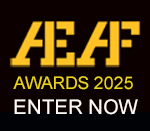
Video not available for public viewing
Feature Films VFX
Kingdom of the Planet of the Apes
Wētā FX
With 12 new hero characters, and a world of visually rich environments swallowed up by nature - Kingdom of the Planet of the Apes marks a step forward in the evolutionary journey.
For this new generation of apes, speech is the primary form of communication - requiring greater fidelity and efficiency in our facial animation approach. A stereo pair of infrared cameras recorded our actors' facial performances. This data was used by our Deep Learning Facial Solver, resulting in greater consistency from shot to shot, and providing facial animators more time to spend on the emotional nuances of every performance. For the first time on ape characters we employed DeepShapes. This added an additional level of detail and believability to skin deformation, providing a subtlety to the animation that is not possible with blendshapes alone.
Our characters were built with improved body topology, resulting in more anatomically-correct muscle and tissue simulations. We employed our latest shading framework which, in concert with full-range HDRI captures of our locations, allowed lighting artists to iterate faster and arrive at stunning images that integrated with and complemented the plate photography.
Artists created over 100 unique ape grooms, individually sculpting them to capture the look and personality of the characters and their many variations.
Where mocap rigging was impossible or impractical, we captured our actors with nimble synchronised witness cameras in order to recover their performances in post. New for this instalment was the addition of small stereo machine vision cameras which straddled the matte box of the motion picture camera and provided this "fauxcap" process with a wide field of view and a front row seat to the action. From this ancillary stereo footage, we could also reconstruct a 3D mesh of the scene near the camera to aid in matchmoving physical props our characters were interacting with. Where real locations or sets weren't an option, we meticulously created entirely digital environments, amounting to 33 minutes of the film's running time.
Using our simulation framework Loki, effects artists provided wind to interact with the apes’ fur and the surrounding environment. Chemical formulas and real-world compounds were simulated to replicate an array of fuel sources, creating combustion elements that ranged from torches to an entire village set ablaze. Major simulation challenges were presented in harrowing encounters with a raging river, crashing waves, and an unrelenting flood of sea water in the film's climax. This interaction with digital apes and water was among our greatest challenges to overcome, requiring tight coordination between multiple artists and coupled simulation steps to arrive at the film's heart-pounding sequences.


